calsfoundation@cals.org
Effie Anderson Smith (1869–1955)
Effie Anderson Smith was an Arkansas-born landscape painter and pioneer settler of Arizona. She began painting in southwestern Arkansas, in the style of the Hudson River School. Her mature style, exemplified by her Grand Canyon paintings, emerged after studies with California Impressionists.
Born near Nashville (Howard County), on September 29, 1869, Effie Anderson grew up in Hope (Hempstead County). Her mother, Martha Adelia Coulter Anderson, came from a family of planters near Lockesburg (Sevier County). Her father, Major Adolphus Anderson, whose family members were planters in South Carolina, came to southwestern Arkansas in the 1850s as a surveyor and civil engineer. Her parents married in March 1861, before her father joined ten of his brothers in the South Carolina forces during the Civil War. Evidence suggests that he later returned to Arkansas and served in Cabell’s Brigade.
Effie Anderson was the fourth of the couple’s five children, all born during and just after the war, while the family lived on a farm near Ben Lomond (Sevier County). In 1875, the Andersons were among the first to settle in Hope, where her father was active in early land deals, politics, church, and civic affairs.
It was in Hope that Effie Anderson’s love of drawing and painting began. Her earliest surviving canvas is a landscape, probably a study, depicting an Arkansas lake and mountain scene, dated July 1884. She later attended Hope Female Institute and became a schoolteacher. In 1890, she married William Mark Spencer, whose family ran the Spencer House hotel in Arkadelphia (Clark County). He died three months later, leaving her a widow at age twenty-one.
Her mother was also ill around this time, probably with tuberculosis. They traveled west in 1892 to the New Mexico Territory in an effort to improve her health, but she died shortly after arriving. Although Effie Spencer would soon return to Arkansas, the vast desert expanses and colorful mountain landscapes of the west had made an indelible impression, becoming the main inspiration for her art.
She taught school in Nashville and at Hope High School until 1893. Her father died that year, and she decided to return to New Mexico in the spring of 1894. There, she met Andrew Young (A. Y.) Smith, a Scottish immigrant and railroad clerk. They married in Bisbee, Arizona Territory, in 1895.
A. Y. Smith became bookkeeper at the Commonwealth Mine at Pearce in 1896 and, later, became president of the mine, which produced $10 million in silver and gold. The Smiths moved into the well-appointed mine manager’s house and were leaders in the area’s social life and politics. Disease spared no one in the mining camps. Of the Smiths’ three children, only their middle child, Lewis, survived to adulthood.
After the death of her baby daughter in 1907, Effie Smith sought solace in her art. As her husband’s business trips to California afforded her the opportunity to immerse herself in art again, she studied with leading Impressionists. As a result, her mature style emerged by the 1920s, influenced by mentors Anna Althea Hills of the Laguna Beach art colony and Jean (Gene) Mannheim of Pasadena’s Stickney Memorial School of Fine Art. Smith soon exhibited in galleries across the Southwest, and her Grand Canyon paintings, sold at El Tovar Hotel on the canyon’s south rim, were compared to those of Thomas Moran. She also exhibited regularly at meetings and conferences of the Federation of Arizona Woman’s Clubs; private galleries in Tucson, Phoenix, and El Paso; the Arizona State Fair and Cochise County Fair; and churches and civic clubs.
Around the time an invitation came to present solo exhibits in Washington DC, Philadelphia, and New York, the Smiths’ house burned to the ground on September 17, 1929. Many of her paintings were lost, including those intended for her Corcoran Hall exhibit planned for May 1931 in Washington DC. They rebuilt their home, and Smith worked to recreate the lost paintings. The success of the Washington exhibit resulted in several commissions from eastern buyers.
After her husband fell ill and died in October 1931, Smith stayed on alone in their newly rebuilt home through the Great Depression. By 1941, after forty-five years in Pearce, she relocated to the stately Hotel Gadsden in Douglas, Arizona, south of Pearce, on the Mexican border. Now seventy-two years of age, Smith operated an art studio in her suite, founded an art league, taught classes, exhibited, and lectured. She celebrated her eightieth birthday with a retrospective exhibit in Douglas. Soon afterward, she began a new series of paintings depicting scenes along the Coronado Trail.
As her health and income declined, in 1951, Smith availed herself of a benefit offered to early settlers, becoming a resident of the Arizona Pioneers’ Home in Prescott. Failing eyesight now curtailed her painting. She refocused her energies on seeking donations of books and recordings for the Pioneers’ Home library. After a brief illness, she died on April 21, 1955.
In her most prolific years, from about 1915 to the late 1940s, Effie Anderson Smith created hundreds of desert paintings depicting Arizona’s raw natural beauty. During the last two decades of her life, Arizona newspapers referred to her as “The Dean of Arizona Women Artists.” The largest permanent exhibit of Smith’s paintings is in the Douglas Historical Society’s collection. In 2023, a selection of more than twenty of her paintings were part of a traveling exhibit that visited Nashville, Arkadelphia, Hope, and Historic Washington State Park.
For additional information:
Arnold, O. Carroll. “Arizona’s Forgotten Artist, Mrs. A. Y. Smith.” Cochise County Historical Journal 19 (Fall 1989).
Clancy, Sean. “Effie Comes Home.” Arkansas Democrat-Gazette, September 11, 2023, pp. 1D, 6D. Online at https://www.arkansasonline.com/news/2023/sep/10/southwest-painter-effie-anderson-smiths-a37765dc/ (accessed September 11, 2023).
Commonwealth Mine Papers. Special Collections. University of Arizona Library, Tucson, Arizona.
Compton, Marian. “Mrs. A. Y. Smith, Arizona Artist.” Progressive Arizona and the Great Southwest 9 (November 1929).
E. A. Smith Online Archive. https://www.effieandersonsmith.com/ (accessed January 5, 2023).
E. A. Smith (Mrs. A. Y. Smith) Papers. Arizona Historical Society, Tucson, Arizona.
“Effie Anderson Smith (1869–1955).” AskART.com. http://www.askart.com/artist/Effie_Anderson_Smith/114749/Effie_Anderson_Smith.aspx (accessed October 7, 2020).
Hayostek, Cindy. “Effie Anderson Smith.” Borderland Chronicles, no. 17 (January 2012).
Hughes, Edan Milton. Artists in California, 1786–1940. Sacramento: Crocker Museum of Art, 2002.
Kovinick, Phil, and Marian Yoshiki-Kovinick. An Encyclopedia of Women Artists of the American West. Austin: University of Texas Press, 1998.
Mrs. A. Y. Smith Papers. Special Collections. University of Arizona Library, Tucson, Arizona.
Toles, Myriam. “Pioneer Painter.” Cochise County Historical Journal 19 (Fall 1989).
M. Steven Carlson
E. A. Smith Archive
 Arts, Culture, and Entertainment
Arts, Culture, and Entertainment Early Twentieth Century, 1901 through 1940
Early Twentieth Century, 1901 through 1940 Women
Women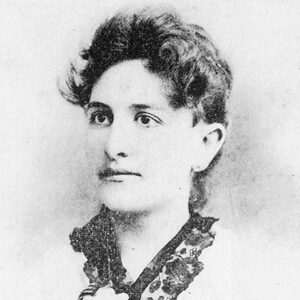 Effie Anderson
Effie Anderson  Grand Canyon View
Grand Canyon View 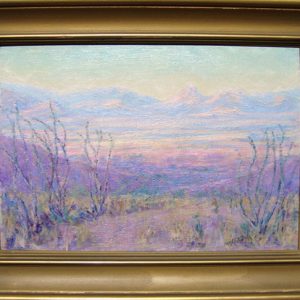 High Lonesome Road
High Lonesome Road 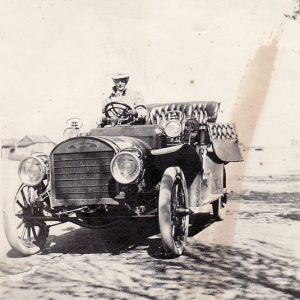 Effie Anderson Smith Driving
Effie Anderson Smith Driving 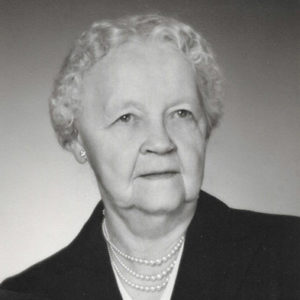 Effie Anderson Smith
Effie Anderson Smith  Andrew Young Smith & Effie Anderson Smith
Andrew Young Smith & Effie Anderson Smith 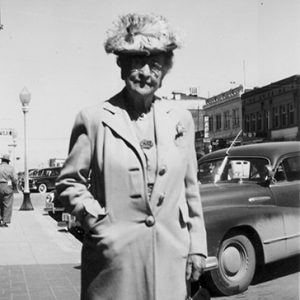 Effie Anderson Smith
Effie Anderson Smith 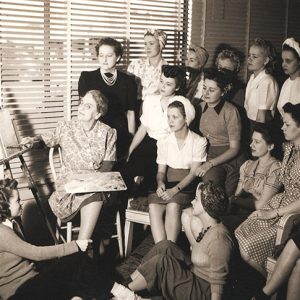 Effie Anderson Smith Studio
Effie Anderson Smith Studio 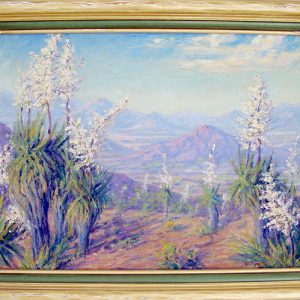 Yuccas Blooming above Valley
Yuccas Blooming above Valley 




Comments
No comments on this entry yet.